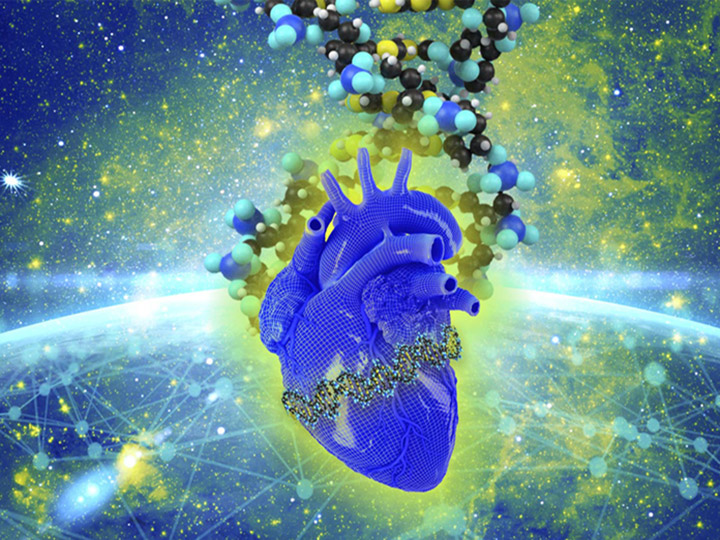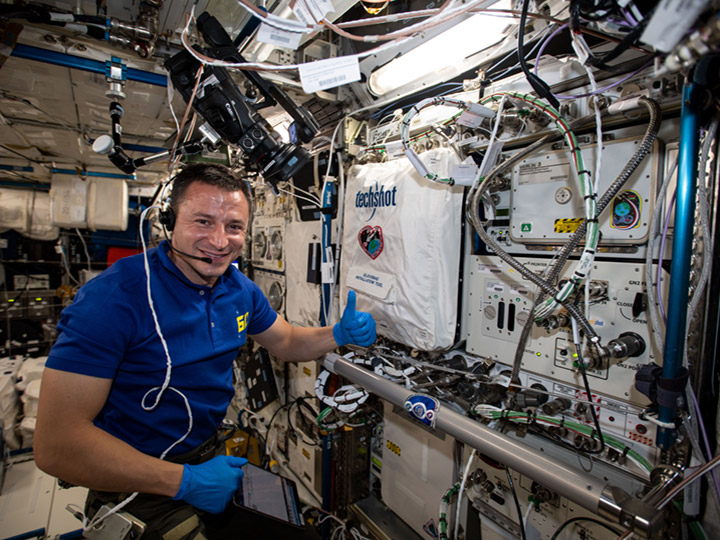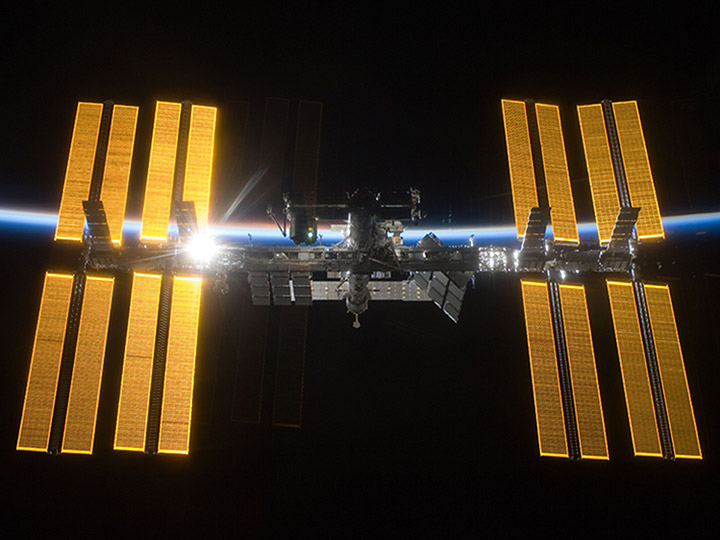The microgravity conditions on the International Space Station (ISS) U.S. National Laboratory allow researchers to study heart cells in ways not possible on the ground. Such space-based research could enable improved cardiovascular disease modeling and aid in the development of therapies to improve the lives of the millions of people on Earth with heart disease.
Below, learn about some of the investigators leveraging the ISS National Laboratory for valuable cardiovascular research and hear the advice they have for the next generation of scientists and explorers.
Mary Kearns-Jonker: Examining the Effects of Microgravity on Immature Heart Cells

Loma Linda University researcher Mary Kearns-Jonker and her team conducted an investigation on the ISS National Laboratory to study microgravity’s effects on human cardiovascular progenitor cells (CPCs)—immature heart cells that can be developed into several different types of cardiovascular cells. On the ground, scientists are investigating the potential use of CPCs in the development of regenerative therapies to repair damaged heart tissue. Kearns-Jonker and her team found that microgravity induces changes in CPCs that could be beneficial for cell-based regenerative therapies back on Earth.
Kearns-Jonker’s research is featured in the most recent issue of Upward—to learn more, see the issue’s cover story “Mending a Broken Heart Using Microgravity: Cardiovascular Progenitor Cells Hold Promise for Regenerative Therapies.”
“If one finds that microgravity-induced benefits can be recapitulated in simulated microgravity models on Earth, it’s very reasonable to envision pretreating the cells with simulated microgravity for prospective therapeutic applications."—Mary Kearns-Jonker
Arun Sharma: Evaluating Heart Function in Microgravity
Arun Sharma, a postdoctoral research fellow at the Harvard Medical School Department of Genetics, and his team—led by Stanford University researcher Joseph Wu—used the ISS National Laboratory to investigate the effects of microgravity on the function of cardiomyocytes (heart muscle cells) derived from human induced pluripotent stem cells (iPSCs). Human iPSCs are developed using human blood or skin cells that have been altered to reinstate the characteristics of stem cells, which have the ability to become many different types of cells. Knowledge gained from the team’s investigation could lead to a better understanding of cardiomyocyte function and improved models of cardiovascular disease.
Read more about Sharma’s research in the ISS360 Q&A “The Heart of the Matter: Exploring Heart Cells in Microgravity.”
"We’re doing a variety of analyses to see how the heart cells beat differently or how their DNA changes due to microgravity. A big unanswered question is—what happens at the cellular level due to microgravity? And then, how can we use this new understanding to help cardiac patients here on Earth?"—Arun Sharma
Chunhui Xu: Studying Microgravity’s Effects on the Proliferation and Differentiation of Heart Cells
Emory University researcher Chunhui Xu and her team are working on an upcoming investigation on the ISS National Laboratory focused on the generation of cardiomyocytes for use in research and clinical applications. The team is studying the ability of cardiomyocytes to differentiate from iPSCs and proliferate (divide and increase in number) in microgravity. In their ground-based research, Xu and her team found that simulated microgravity increased the yield, purity, and survival of iPSC-derived cardiomyocytes, and true microgravity conditions are expected to further enhance these effects. Results from this research could lead to advances in regenerative medicine as well as improved cardiovascular disease modeling and drug testing.
Learn more about Xu’s research in the Upward feature “Pure of Heart: How Microgravity is Improving Cardiac Cell Quality.”
“Large numbers of cardiomyocytes need to be generated in a more efficient way than currently possible. When we combined simulated microgravity with 3D culturing techniques, we saw promising steps toward reaching that goal.”—Chunhui Xu







